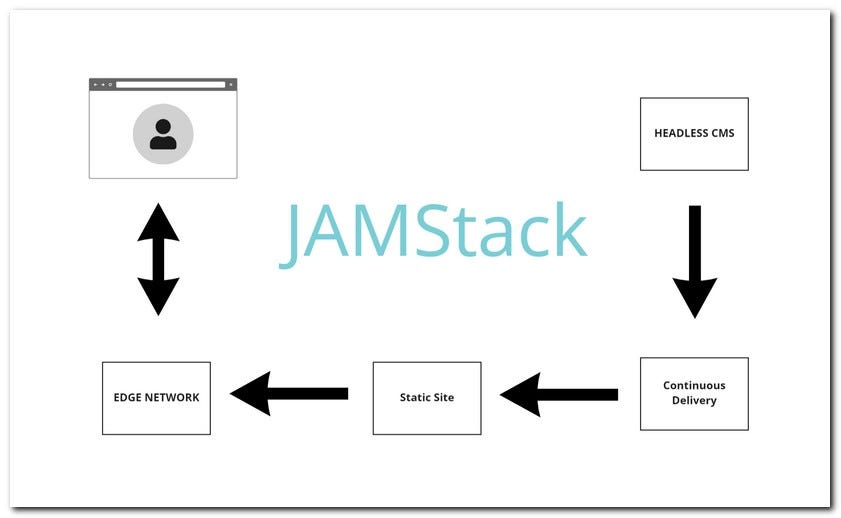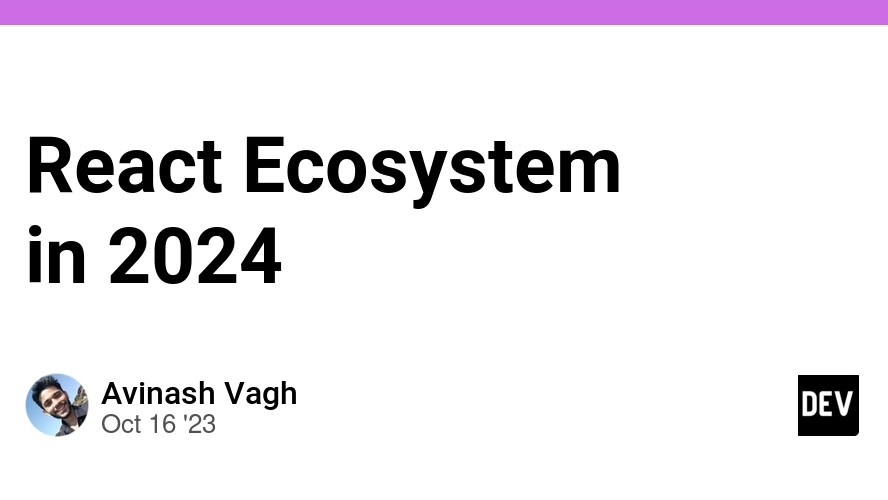The world of React development is in a constant state of flux, a vibrant ecosystem where innovation happens at a breakneck pace. For developers building on the Jamstack, staying current isn’t just a good practice—it’s essential for building modern, performant, and maintainable web applications. While headlines might focus on one framework, the real story lies in the interconnected evolution of the entire ecosystem. This article dives deep into the latest Gatsby News, placing it within the broader context of significant updates across frameworks like Next.js and Remix, state management libraries, testing tools, and the ever-growing React Native landscape. We’ll explore the paradigm shifts, practical code implementations, and best practices that are defining the future of web and mobile development with React.
The Framework Frontier: A New Era of Hybrid Rendering
The traditional lines between Static Site Generation (SSG) and Server-Side Rendering (SSR) are becoming increasingly blurred. The latest framework updates reflect a move towards a more flexible, hybrid approach, giving developers the power to choose the best rendering strategy on a per-page or even per-component basis. This shift is central to the latest Gatsby News and is a recurring theme in the wider React community.
Gatsby News: Beyond Static with Dynamic Capabilities
Gatsby, long celebrated as the king of SSG, has powerfully evolved to embrace dynamic content. The introduction of Deferred Static Generation (DSG) and Server-Side Rendering (SSR) allows Gatsby sites to handle real-time data and user-specific content without sacrificing the core benefits of pre-built static assets. DSG allows non-critical pages to be built on-demand after the initial deployment, while SSR enables fully dynamic pages rendered at request time. This makes Gatsby a more versatile choice for e-commerce, user dashboards, and other data-intensive applications.
Here’s how you can implement SSR on a Gatsby page to fetch fresh data for every request:
// src/pages/products/{product.id}.js
import React from "react";
const ProductPage = ({ serverData }) => {
if (!serverData) {
return <p>Loading product details...</p>;
}
return (
<main>
<h1>{serverData.product.name}</h1>
<p>Price: ${serverData.product.price}</p>
<p>In Stock: {serverData.stockInfo.inventory}</p>
</main>
);
};
export default ProductPage;
export async function getServerData(context) {
const { id } = context.params;
try {
// Fetch product details and live stock information from two different APIs
const [productRes, stockRes] = await Promise.all([
fetch(`https://api.example.com/products/${id}`),
fetch(`https://api.inventory.com/stock/${id}`),
]);
if (!productRes.ok || !stockRes.ok) {
throw new Error(`Response failed`);
}
return {
status: 200,
props: {
product: await productRes.json(),
stockInfo: await stockRes.json(),
},
};
} catch (error) {
return {
status: 500,
headers: {},
props: {},
};
}
}Next.js News and the Server Components Paradigm
Simultaneously, the Next.js News has been dominated by the stable release of the App Router, built on top of React Server Components (RSCs). This marks a fundamental shift in how developers think about building React applications. RSCs allow components to run exclusively on the server, fetching data and rendering HTML without sending any JavaScript to the client. This can dramatically reduce bundle sizes and improve initial load times. This server-centric approach is a significant trend, with other frameworks like the up-and-coming RedwoodJS News also exploring similar patterns.
Remix News and a Focus on Web Standards
Meanwhile, Remix News continues to champion a philosophy grounded in web standards. Remix leverages native browser features like the Fetch API, Request, and Response objects, making its APIs feel familiar and intuitive. Its focus on data mutations through simple HTML forms and server-side `action` functions provides a robust and progressively enhanced user experience. This adherence to fundamentals offers a compelling alternative to the more JavaScript-heavy abstractions found elsewhere.

Modernizing State and Data Management
Managing application state has always been a core challenge in React. While Redux was once the default choice, the ecosystem has since produced a variety of powerful and often simpler alternatives for both client-side and server-side state.
The Lightweight State Champions: Zustand and Jotai
The latest Redux News centers on Redux Toolkit, which has greatly simplified boilerplate. However, for many applications, even RTK can feel like overkill. This has led to the rise of minimalist libraries. The latest Zustand News highlights its incredible simplicity and small bundle size. It uses a straightforward, hook-based API that feels like a simple state machine but offers powerful features like middleware and transient updates.
Here’s a look at how simple it is to create a shared state store with Zustand:
import { create } from 'zustand';
import { devtools } from 'zustand/middleware';
// Define the store with actions
const useAuthStore = create(devtools((set) => ({
user: null,
token: null,
isLoading: true,
login: (userData, authToken) => set({ user: userData, token: authToken, isLoading: false }),
logout: () => set({ user: null, token: null }),
setLoading: (status) => set({ isLoading: status }),
})));
// A component that uses the store
function UserProfile() {
const { user, logout, isLoading } = useAuthStore();
if (isLoading) {
return <div>Loading...</div>;
}
if (!user) {
return <div>Please log in.</div>;
}
return (
<div>
<p>Welcome, {user.name}!</p>
<button onClick={logout}>Log Out</button>
</div>
);
}
export default UserProfile;Similarly, Jotai News and Recoil News revolve around the concept of atomic state, where individual pieces of state (“atoms”) can be updated and subscribed to independently. This prevents the large, unnecessary re-renders that can sometimes plague monolithic state stores, making it a great choice for complex UIs with many interdependent stateful elements.
Data Fetching as a Solved Problem
Perhaps the biggest revolution has been in managing server state. Libraries like React Query (now TanStack Query) have reframed data fetching not as a one-time event, but as a continuous synchronization process. The latest React Query News showcases its framework-agnostic nature and powerful features like caching, background refetching, and optimistic updates. For GraphQL users, Apollo Client News and Urql News continue to provide robust, cache-first solutions that integrate seamlessly with GraphQL schemas, making client-side data management declarative and predictable.
Enhancing Developer Experience: Testing, Tooling, and UI
A mature ecosystem is defined by its tooling. The React world has made tremendous strides in providing developers with tools that improve productivity, ensure code quality, and enable the creation of sophisticated user interfaces for both web and mobile.
The User-Centric Testing Revolution

The way we test React components has fundamentally changed. The latest React Testing Library News reinforces its dominance by promoting a philosophy of testing applications the way users interact with them. Instead of testing implementation details (a common pitfall with older tools like Enzyme), developers are encouraged to query the DOM based on accessibility attributes and user-visible text. This makes tests more resilient to refactoring. Paired with the powerful Jest News as a test runner and assertion library, this forms the foundation of modern React testing.
For end-to-end testing, Cypress News and Playwright News are leading the charge with reliable, fast, and debuggable E2E tests that run in a real browser.
Here is a simple test using React Testing Library and Jest:
import React from 'react';
import { render, screen, fireEvent } from '@testing-library/react';
import '@testing-library/jest-dom';
import Counter from './Counter'; // A simple component with a button and a display
describe('Counter Component', () => {
test('it should render the initial count and increment on click', () => {
// 1. Render the component
render(<Counter />);
// 2. Find elements by their role and text content (user-centric)
const countDisplay = screen.getByText(/count is: 0/i);
const incrementButton = screen.getByRole('button', { name: /increment/i });
// 3. Assert initial state
expect(countDisplay).toBeInTheDocument();
// 4. Simulate user interaction
fireEvent.click(incrementButton);
// 5. Assert the new state
expect(screen.getByText(/count is: 1/i)).toBeInTheDocument();
expect(countDisplay).not.toBeInTheDocument(); // The old text is gone
});
});React Native and Cross-Platform Development
The mobile landscape is just as dynamic. The latest React Native News shows a continued focus on performance with its new architecture. The Expo News is particularly exciting, as the framework continues to abstract away the complexities of native build tooling, making it easier than ever to get a cross-platform app running. The UI component library space is also thriving, with React Native Paper News offering Material Design components, and Tamagui News providing a cutting-edge universal styling and component library that works on both web and native.
Best Practices and Performance Optimization
Writing good React code involves more than just choosing the right framework. It requires attention to performance, user input, and the underlying build process.

High-Performance Forms and User Input
Forms are a critical part of any application. While libraries like Formik have been popular for years, the latest React Hook Form News highlights its dominance due to a performance-first approach that minimizes re-renders by using uncontrolled inputs. This can make a significant difference in complex forms with many fields.
import React from 'react';
import { useForm } from 'react-hook-form';
function RegistrationForm() {
const { register, handleSubmit, formState: { errors } } = useForm();
const onSubmit = (data) => {
console.log('Form data submitted:', data);
alert('Registration successful!');
};
return (
<form onSubmit={handleSubmit(onSubmit)}>
<div>
<label htmlFor="email">Email</label>
<input
id="email"
{...register('email', {
required: 'Email is required',
pattern: {
value: /^\S+@\S+$/i,
message: 'Invalid email address',
},
})}
/>
{errors.email && <p style={{ color: 'red' }}>{errors.email.message}</p>}
</div>
<div>
<label htmlFor="password">Password</label>
<input
id="password"
type="password"
{...register('password', {
required: 'Password is required',
minLength: {
value: 8,
message: 'Password must be at least 8 characters',
},
})}
/>
{errors.password && <p style={{ color: 'red' }}>{errors.password.message}</p>}
</div>
<button type="submit">Register</button>
</form>
);
}
export default RegistrationForm;The Build Tool Revolution with Vite
Developer experience is paramount, and slow build times are a major productivity killer. The biggest Vite News is its rapid adoption across the ecosystem. Vite leverages native ES modules in the browser during development, resulting in near-instant server start and Hot Module Replacement (HMR). This speed has made it the build tool of choice for many new projects and has pushed frameworks like SvelteKit and even parts of the React ecosystem to adopt it, challenging the long-standing dominance of Webpack.
Conclusion: Navigating the Future of React
The React ecosystem is more vibrant and diverse than ever. The latest Gatsby News shows a framework adapting to the demand for dynamic, data-driven experiences, a trend mirrored by its peers. The key takeaway for developers is the theme of flexibility and choice. We’ve moved from monolithic solutions to a rich tapestry of specialized tools. The lines between client and server are blurring with React Server Components, state management has become lighter and more intuitive with libraries like Zustand, and our testing practices are more aligned with user behavior than ever before. Staying informed and being willing to experiment with these new tools and paradigms is the best way to build exceptional applications and grow as a developer in this exciting, ever-changing landscape.











